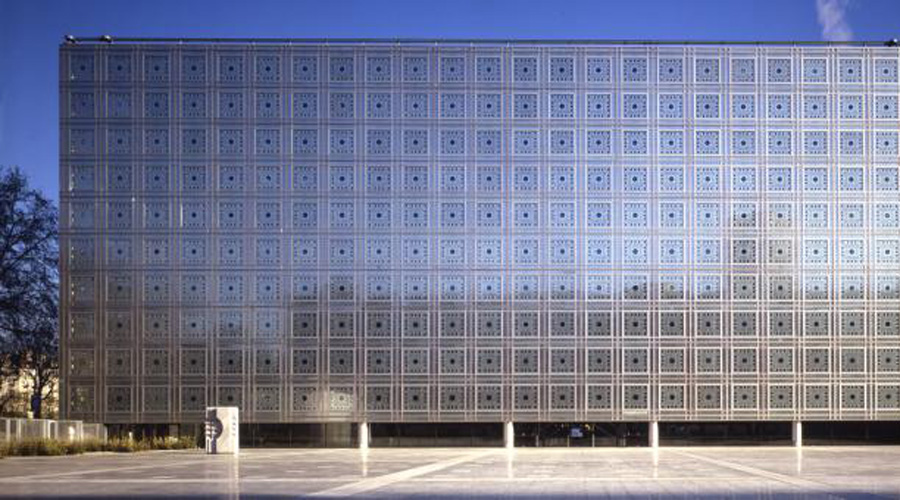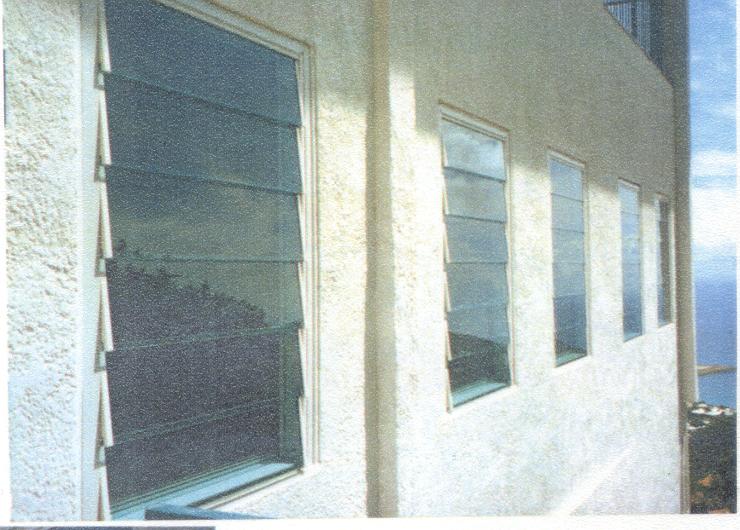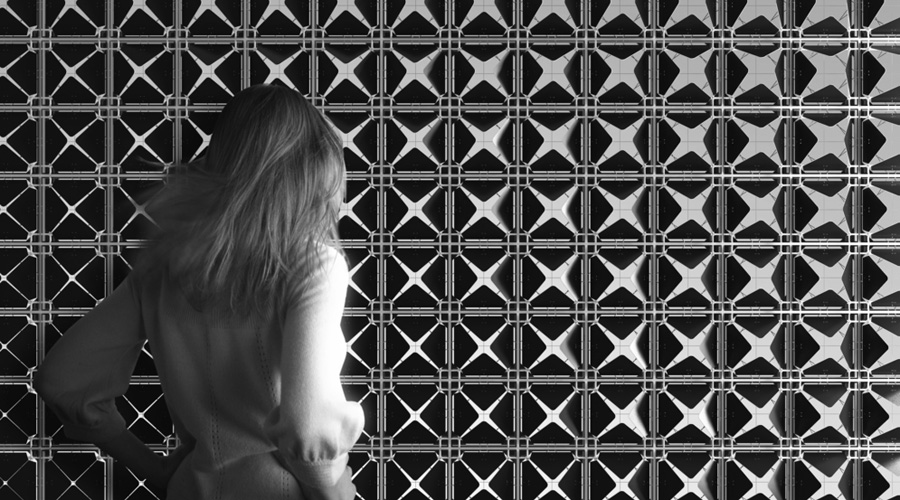AIDE: Assignment 3

Jean Nouvel's L'Institut du Monde Arabe (Arab World Institute), located on Rue de Fosses Saint-Bernard in Paris, is designed as a museum, library, auditorium and commercial spaces.
It was completed in 1988, and features an active glass and steel curtain wall engineered around a matrix of sun control diaphragms. This extreme design feature has as a dual function - to reference Islamic patterned screens in its pure aesthetic execution while operating actively as an array of camera like lenses which control the sun's penetration through the facade.
The system of apertures is driven by light activated sensors, opening and closing depending upon the ambient lighting conditions. This dramatic device serves as an example of the possibilities for residential and commercial building opportunities, either in this configuration or purely as a reference for future development. It is not dissimilar to the more mainstream application of louvers.
Systems design thinking continues to attract the attention of architects, manufacturers, builders and developers around the world, some more successfully than others. Mathew Aitchison
(UQ Postdoctoral Research Fellow School of Architecture at The University of Queensland) writes in 'The Conversation' of his misgivings surrounding the genre after touring Japanese pre-fab house builders recently.
This is perhaps a timely reflection on the quest for prefabrication at the expense of diversity within the urban fabric. Architect Robin Boyd wrote lucidly in his controversial 'The Australian Ugliness' way back in 1960 (listen to Radio National broadcast 'Robin Boyd's The Australian Ugliness 50 years on') of the ill-conceived design and planning evident across the vast majority of suburban housing stock!Workers jogging to keep to the tempo of “the line”, screwing on windows rather than steering wheels. Melodies from western children’s nursery rhymes played in dull electronic tones when overhead machinery moved and, on one day, the thermometer on the factory floor read 35C (fine for robots, almost unworkable for humans).
Air Flower by Cambridge, Massachussets firm Lift Architects takes a refreshing approach to a proposed modular facade, developing a prototype system which explores a new and relatively simple mechanism reminiscent of a blooming flower.
These innovative design solutions represent an age old approach relating to the modularisation of building systems out of the need for production economies of scale and production volume within the fabric of single (and potentially multiple) sites. This methodology lends itself to further economies through processing optimisation such as robotic assembly on site.
As the combination of robotics and rapid prototyping sweep the world, the opportunity to re-visit the ubiquitius building brick presents enormous possibilities for the building industry. Concrete bricks in solid and hollow form are well established within the residential and commercial building industries, offering limitless customisation and adaptability within prescribed standards.
Assignment Three takes Boral's raw building block as the launch pad for exciting propositions aimed at the growing housing stock retrofit and renovation industry.
Assignment 3: Product Design
Propose a new building brick to replace a Boral hollow concrete brick to function in a complimentary manner, by way of design and material specification.
Hollow concrete brick assignment by studiobutcher on Sketchfab
Engineered Building Block - Range Extension
Engineer a complimentary and sympathetic alternative engineered block design to function alongside the range of Boral Series 150 concrete hollow building blocks.
Within the dimensional parameters of 390mm x 190mm x 140mm consider
Materials and components suited to Australian conditions.
Assemblies and processes targeting future building technologies.
Production materials and processes suited to medium volumes with an eye to development for higher volumes.
Fire risk building sites
Proposal requirements
At least two distinct materials and manufacturing processes in your design.
Structural chassis.
Components for passive and/or active lighting, air flow and retrofit.
Assessment criteria
30% of overall grade
Creativity of your design in regards to use of materials, processes and originality.
Technical understanding and application in regards to how the different components are designed and the level of detail shown.
Overall quality of the documentation of the design.
Note: there is no price point restriction on your design. It can be either a low end or a high end application or both.
Deliverables
Submission is a landscape PDF document (or website page) that includes the following:
A ¾ view of the product – hero shot
An exploded view of the product with part numbers
A cross section of the product identifying how the internal components are positioned and secured by your housings.
A bill of materials (BoM) corresponding to the exploded view that includes material type, manufacturing processes and surface treatment if applicable.
One page written overview of the design
Submission
Post your document to the Wiki (located in Week 14 folder on Blackboard) at 9am, Friday, October 31st November 7th (revised to avoid a clash with design studio submissions.)
30% of overall semester grade
| 1 | Hero shot and promo | Drawings and BoM | Written overview |
|---|---|---|---|
| 2 | 25% | 50% | 25% |
Marks will be deducted for late submissions, at the discretion of the class tutor.

